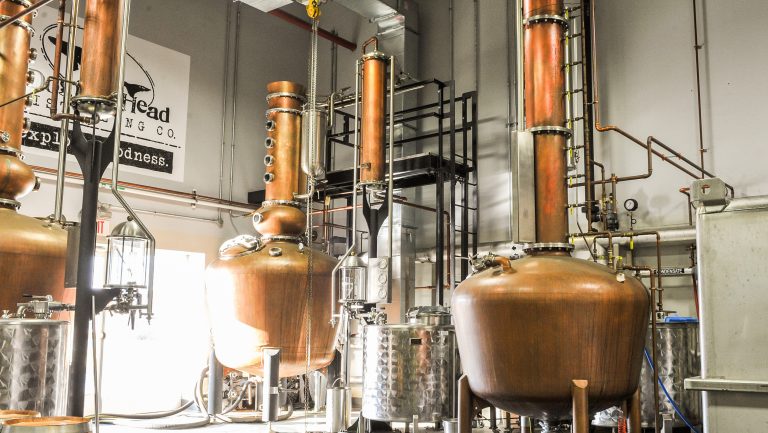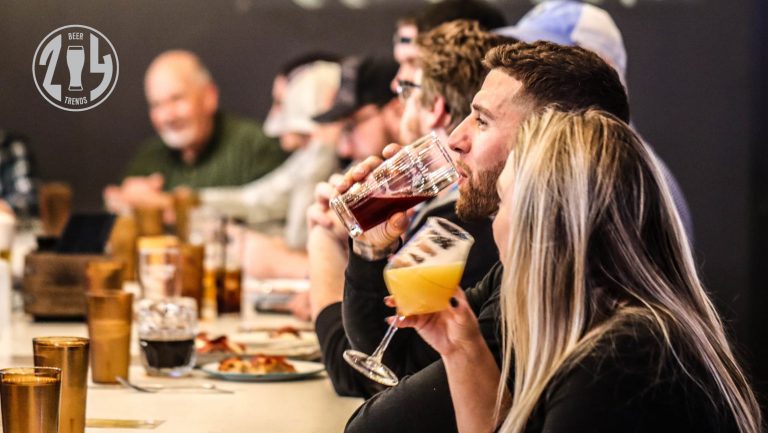Anyone who’s wandered the floor of BrewExpo America—the trade show part of the annual Craft Brewers Conference—will have noticed, among all the brewing and packaging-equipment vendors, the increasingly prominent presence of stills in the exhibit hall. While it may seem a bit incongruous to the casual observer, it’s a sign of the times: A growing number of brewers are hybridizing their operations and adding spirits to their offerings. There are already 256 American businesses that hold both brewer’s and distiller’s licenses, according to the U.S. Alcohol and Tobacco Tax and Trade Bureau.
The Intersection of Brewing and Distilling
“There’s a natural connection between brewing and distilling,” says Mark Shilling, the immediate past president of the American Craft Spirits Association (ACSA) and the founder of the distillery consulting firm Shilling/Crafted in Austin, Texas. “On the economic side, there’s been some pressure over the last couple of years, particularly on the smaller breweries. The number of breweries is still growing rapidly, but the market for those individual breweries is shrinking, going from regional to local, because there are more and more of them.”
As that happens, Shilling says, breweries are looking for new, non-brewing opportunities to expand—or simply to sustain—their businesses. And distilling is one of the big opportunities for them, since the craft spirits segment is growing faster than craft beer—albeit off a much smaller base, as craft brewing is a more mature category with a larger share of the overall U.S. beer market than craft distillers have of the broader spirits market.

Don’t miss the latest drinks industry news and insights. Sign up for our award-winning newsletters and get insider intel, resources, and trends delivered to your inbox every week.
The Brewers Association (BA) reported in March that craft beer volume grew 5 percent in 2017, compared with a 6 percent increase in 2016 and a 13 percent gain in 2015—evidence that the robust, double-digit growth days for the segment have come to an end. The volume of craft spirits, on the other hand, has grown in the range of 18 to 27 percent each year from 2011 through 2016, according the Craft Spirits Data Project (CSDP), a joint monitoring effort of the ACSA, International Wine & Spirits Research, and the beverage alcohol solutions provider Park Street.
Craft brewers’ share of U.S. beer volume, according to the BA, has reached 12.7 percent, while craft distillers’ share of spirits is a much more modest 2.6 percent. The BA puts the number of operating craft breweries in the U.S. at 6,266, while CSDP’s mid-2017 estimate of the number of craft spirits producers was just shy of 1,600—up from a mere 280 in 2011. The rapid growth and smaller market share means there’s probably still plenty of runway left for distilling.
“I think it’s great for the spirits category that more brewers are getting into distilling,” says James Montero, the general manager of Dogfish Head Distilling in Milton, Delaware, the spirits division of Dogfish Head Craft Brewery. “And we’re really still at the early stages of the craft spirits movement.”
A Pioneering Brewstillery
Dogfish Head was among the early adopters in the “brewstillery” movement, having commenced distilling operations on the second floor of its original brewpub in Rehoboth Beach in 2002, about seven years after Sam Calagione founded the brewery. For its first dozen years, the distillery remained a fairly modest operation, producing rum and vodka on what Dogfish dubbed the Frankenstill, which was fashioned from an inverted grain silo. For most of the distillery’s existence, the spirits were available only at the brewpub and a handful of select retailers around Delaware.
“It was pretty small because Dogfish Head was focused on building the beer brands,” says Montero. During that time, the company was able to observe evolving consumer drinking habits and determine that there was a greater opportunity for spirits, especially in light of the craft cocktail revolution. About three and a half years ago, Dogfish moved the distillery to the company’s main production brewery, enabling it to scale up and more easily access the expansive facility’s resources.

“In order for Dogfish to do it right,” says Montero, “we needed to have the same quality of spirit that we had in the beer space and the ability to control our production so we could maintain consistency. It’s very easy to make a spirit, but in an analog, batch-distilling process, it’s hard to make sure that you’re hitting that [consistency] time and time again.”
Dogfish Head Distilling has since expanded its distribution outside Delaware into the nearby markets in Maryland, Washington, D.C., and Virginia, though the distillery products still represent only about 1 percent of Dogfish’s total business. The company produces nine brands, with most of the volume accounted for by its core five: Analog Vodka, Compelling Gin, Barrel Honey Rum, Roasted Peanut Vodka, and Sonic Archeology—the latter is a bottled cocktail inspired by the Prohibition era that combines the distillery’s rum, whiskey, and apple brandy with lemon and pomegranate juices and honey.
Building a Successful Brewery-Distillery Hybrid
“We’re discovering that you don’t necessarily have a spirits consumer—you have consumers who drink,” says Montero. “They have beer moments, they have cocktail moments, they have moments they drink on premise and moments they drink at home.” Having an established, recognizable brand, like Dogfish Head, is certainly an advantage when a brewery that’s launching a distillery—or a distillery launching a brewery, for that matter—aims to harness all those moments.
Rogue in Newport, Oregon, was another brewery that was able to leverage its name recognition when it opened its own distillery about 15 years ago. Though, as head distiller Jake Holshue jokingly points out, that can sometimes be a double-edged sword. “I would say [the name recognition] is both a gift and a curse,” he says. “As a well-known brewery—and distillery—you’re always going to have a lot of successes, but you’re also going to have some failures. And sometimes those failures follow you as much as the successes do.”
But, in Rogue’s case, the successes seem to be far outpacing the failures. “I think we started turning heads when we started winning major awards, both through the ACSA and the San Francisco World Spirits Competition,” says Holshue. “When you win double-golds and platinums from those kind of organizations, those aren’t flukes.”
When it first launched the distillery, Rogue was primarily producing rums. It has since shifted its focus toward whiskey. Three years ago it started making its own barrels, in which some of that whiskey is aged. “That, to my knowledge,” he says, “makes us the only brewery-distillery-cooperage in the world.” Holshue doesn’t offer an exact figure, but he says distilling comprises less than 10 percent of Rogue’s business.
Other notable brewery-distillery combinations include New Holland in Holland, Michigan, and Mother Earth in Kinston, North Carolina. San Francisco’s Anchor Brewing had also been operating a distillery before Sapporo, the Japanese beer brand, bought the beer maker in 2017; the distilling business was sold separately to another entity—and has recently been rebranded as Hotaling & Co. Earlier this year, Two Brothers Brewing in the Chicago suburbs started rolling out its spirits line, and 3 Floyds Brewery in Munster, Indiana, announced that its distillery will be up and running this fall.
“All breweries are already doing 50 percent of the work,” says Montero, as “the first step in distillation is fermentation.” He underscores, though, that even if about half of the process is similar, a brewery and a distillery are two completely different businesses and must be operated as such. “The distribution channels are very different,” he says. “The economics of selling spirits are very different from the economics of selling beer. The value proposition that spirits provide through the supply chain to the retailer on- and off-premise is very different from what beer provides—[as are] your selling story, the tools you need, the team you need.” Dogfish Head is making an investment in the distilling space and it’s a big investment, he says. “You can’t just throw a still on the ground, make spirits from excess [beer] production, and expect to sell that.”
There are valuable lessons to be mined from the experiences of seasoned brewery-distillery combos like Dogfish Head and Rogue. Whether such inter-craft marriages continue to thrive depends greatly on how much the new dabblers are willing to learn from both the failures and successes of their elders.

Dispatch
Sign up for our award-winning newsletter
Don’t miss the latest drinks industry news and insights—delivered to your inbox every week.
Jeff Cioletti is a former editor in chief of Beverage World magazine and the author of the books The Drinkable Globe, The Year of Drinking Adventurously, Beer FAQ, and the upcoming Sakepedia. He’s a Certified International Kikisake-shi (sake sommelier).







